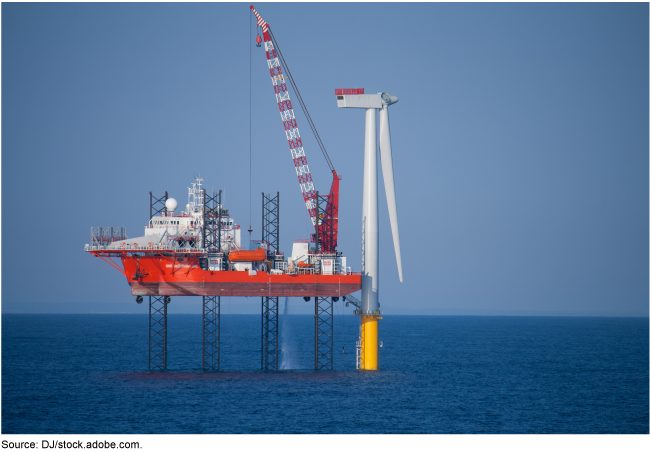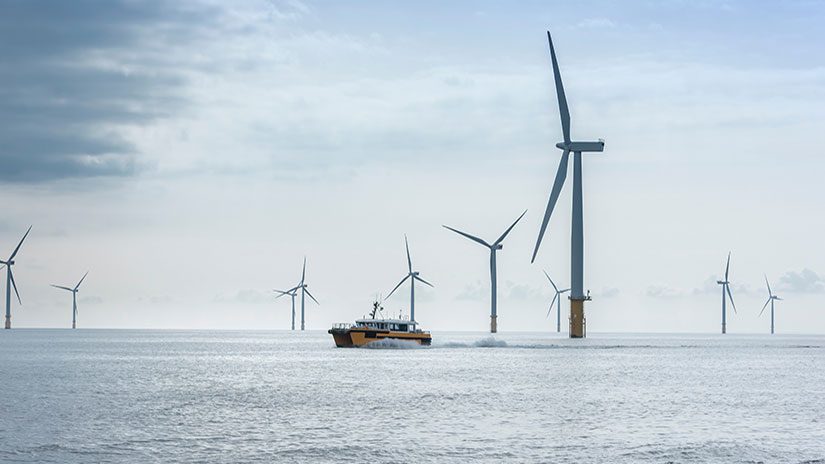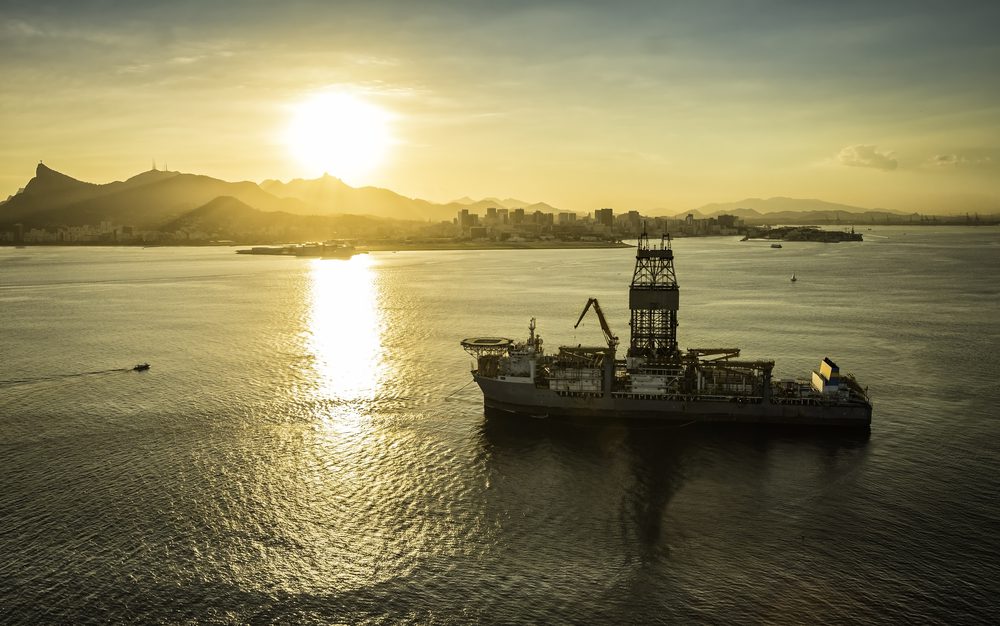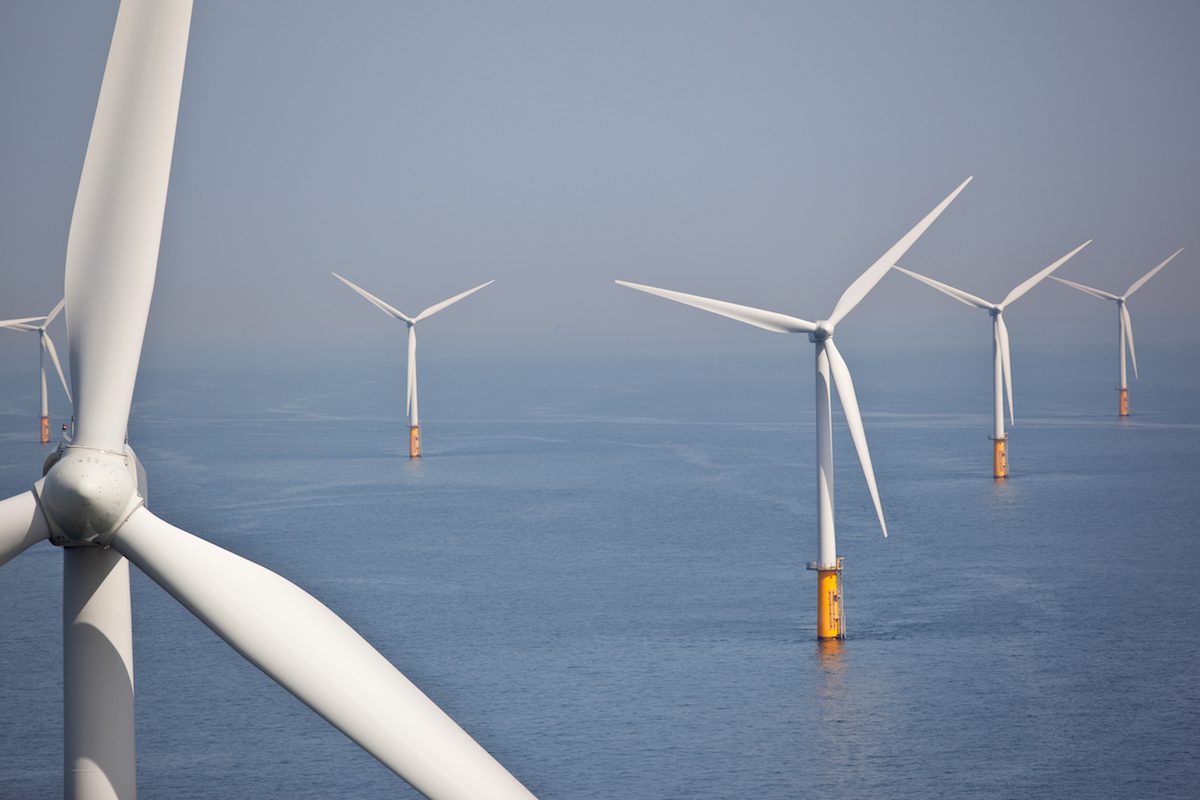Offshore wind projects planned for off the U.S. East Coast could lead to the construction of new vessels at American shipyards, but industry stakeholders face challenges with constructing and using Jones Act-compliant vessels for offshore wind installations, according to a newly published GAO report.
The development of offshore wind energy in the United States will require the use of oceangoing vessels for turbine installation and other tasks associated with the burgeoning offshore wind industry. Some of these vessels may need to comply with the Jones Act, which requires that vessels carrying merchandise between two points in the U.S. be built and registered in the U.S.
However, the GAO found that there are currently no U.S.-built ships suited for installing wind turbines.
Wind turbine installation vessels, or WTIVs, have a large deck and legs that allow the vessel to lift out of the water, and a tall crane to lift and place turbines. Although there is one such vessel is planned, stakeholders told the GAO that are currently no Jones Act-compliant vessels currently capable of serving as a WTIV.
Stakeholders described to the GAO two approaches to using vessels to install offshore wind energy projects in the U.S., both of which may lead to the construction of new vessels that comply with the Jones Act.
“Under one approach, a Jones Act-compliant wind turbine installation vessel (WTIV) would carry components from a U.S. port to the site and also install the turbines,” the GAO said.
“Under the second approach, a foreign-flag WTIV would install the turbines with components carried to the site from U.S. ports by Jones Act-compliant feeder vessels. While some potential feeder vessels exist, stakeholders said larger ones would probably need to be built to handle the large turbines developers would likely use.”
A lack federal approval for projects planned in the U.S. waters was identified as one hurdle for constructing vessels under either approach.
“For example, stakeholders said that obtaining investments in Jones Act-compliant WTIVs—which may cost up to $500 million—has been challenging, in part due to uncertainty about the timing of federal approval for projects,” the GAO said.
The Department of the Interior, which is responsible for approving offshore wind projects, has indicated it plans to issue a decision on the nation’s first large-scale offshore wind project in December 2020.
“Some stakeholders said that if this project is approved, investors may be more willing to move forward with vessel investments. While stakeholders also said port infrastructure limitations could pose challenges to using Jones Act-compliant vessels for offshore wind, offshore wind developers and state agencies have committed to make port investments,” it said.
Report: Planned Projects May Lead to Construction of New Vessels in the U.S., but Industry Has Made Few Decisions amid Uncertainties
Unlock Exclusive Insights Today!
Join the gCaptain Club for curated content, insider opinions, and vibrant community discussions.

 Join The Club
Join The Club













